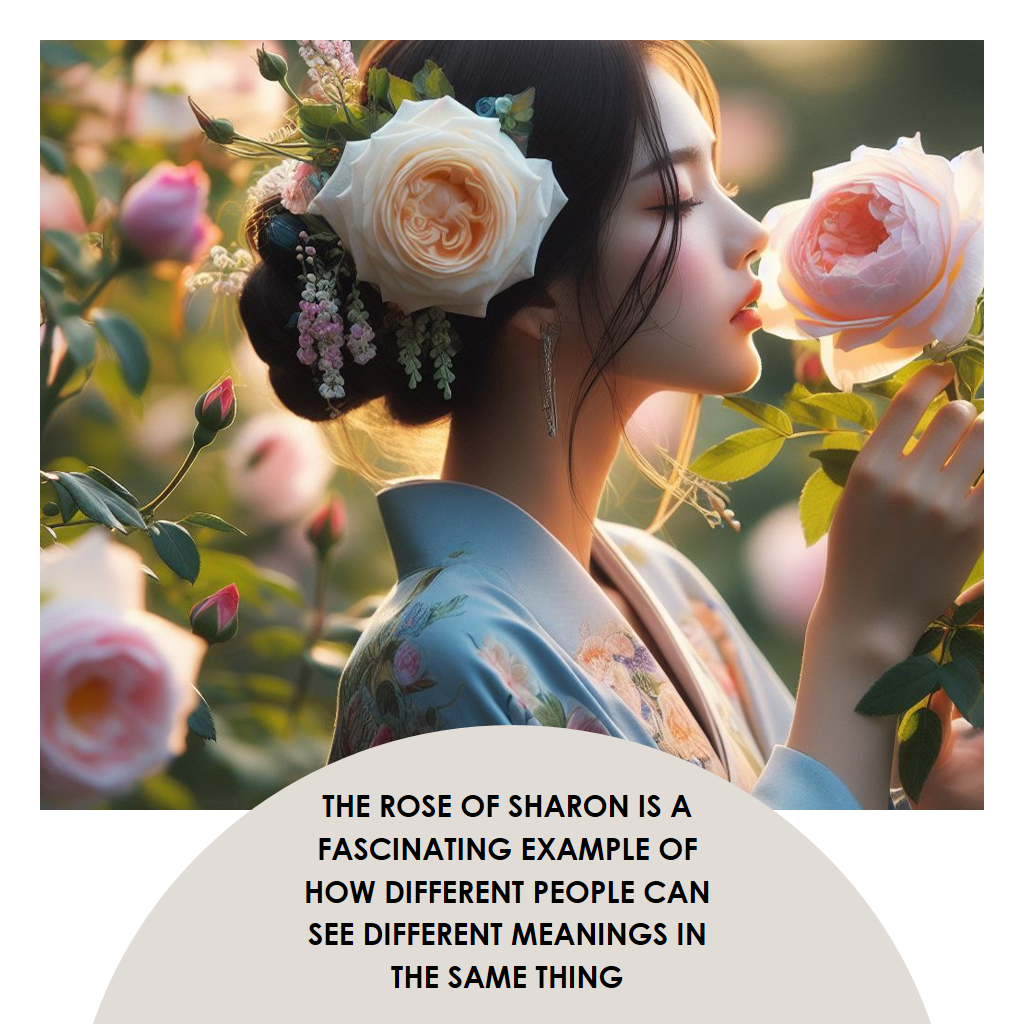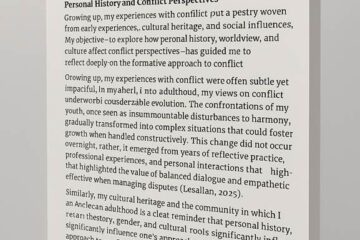Written by Lesallan on this day, February 5, 2024

Fascination in “The Rose of Sharon.”
I have always been fascinated by the Rose of Sharon, a mysterious and beautiful plant that appears in the Bible. I decided to research what it means and symbolizes and found some interesting insights I want to share with you.
The rose of Sharon is mentioned twice in the Bible, in Song of Solomon 2:1 and Isaiah 35:1 (King James Version). In both cases, it is used as a metaphor for something or someone that stands out in a barren or desolate place. In Song of Solomon, the beloved compares herself to the rose of Sharon and the lily of the valleys, implying that she is rare and precious among women. In Isaiah, the rose of Sharon is part of a prophecy that God will restore the land of Israel and make it bloom again as a sign of his grace and mercy.
But what kind of plant is the rose of Sharon? Is it really a rose? The answer is not so simple. The Hebrew word that is translated as “rose” in the King James Version is “chabatstseleth,” which means “meadow-saffron” or “crocus.” However, some scholars argue that this word is a mistranslation and that the original word was “chavatzelet,” which means “narcissus” or “daffodil.” Others suggest that the word is a generic term for any bright-colored flower that grows in the fields or plains of Sharon, a fertile region in ancient Israel.
The identity of the Rose of Sharon has been debated for centuries, and different cultures have different interpretations. Some think that it is a tulip, a hyacinth, a lily, or even a cactus. Some Christians believe that it symbolizes Jesus Christ, who was sinless and suffered in the world. Some Jews believe that it is a symbol of the Messiah, who will come from the lineage of David and restore Israel. Some Muslims believe it symbolizes Muhammad, who was born in Mecca, also called Bakkah or “the valley of weeping.”
The Rose of Sharon is a fascinating example of how different people can see different meanings in the same thing. It shows how the Bible can inspire us to seek a more profound understanding and appreciation of God’s creation. It also shows how God can use anything, even a simple flower, to reveal his love and glory to us.
Breaking down this verse using some of the greatest theologians of the past:
Strong’s Concordance:
The Rose
Of uncertain derivation, probably meadow-saffron — rose.
Sharon
Lasharon, Sharon
Probably abridged from Yashar; plain, Sharon, the name of a place in Palestine — Lasharon, Sharon.
see HEBREW Yashar
Showshan, shoshan
Or showshan {sho-shawn’}; or shoshan {sho- shawn’}; and (feminine) showshannah {sho-shan-naw’}; from suws; a lily (from its whiteness), as a flower of arch. Ornament; also a (straight) trumpet (from the tubular shape): lily, Shoshannim.
see HEBREW suws!
The Lily of the Valley
Strong’s Concordance offers this as a reference to the “The Lily of the Valley:”
Dale, vale, and valley are often used as a part of proper names.
From Iraq, a vale (i.e., Broad depression) — dale, vale, valley (often used as a part of proper names). See also Beyth ha-‘Emeq.
see HEBREW amaq.
see HEBREW Beyth ha-‘Emeq.
Of The Valleys
Signed In Loving Memory,
Lesallan
References:
Strong’s Concordance. (n.d.). Strongsconcordance.org. https://strongsconcordance.org/
In the Loving Memory of My Mother Sharon (1945 – Now Living In Eternity with My (Our) Father).
I signed this for you your Son, Lesallan, on this 5th day of February 2024.
The Bible mentions the rose of Sharon twice, in Song of Solomon 2:1 and Isaiah 35:11 (KJV). The rose of Sharon is a flower or possibly meant to imply a firstborn child that grew in the field or the desert or this thing called society. In the Bible, man does not plant the “Rose of Sharon.” It is used as a symbol of the beloved, who compares herself (himself) to the “Rose of Sharon” and the lily of the valley. The “Rose of Sharon” also represents Jesus Christ, who was free for all sinners and suffered in the world. The plant’s (persons) identity referred to by the “Rose of Sharon” is unclear and disputed in the world of Biblical theology.


